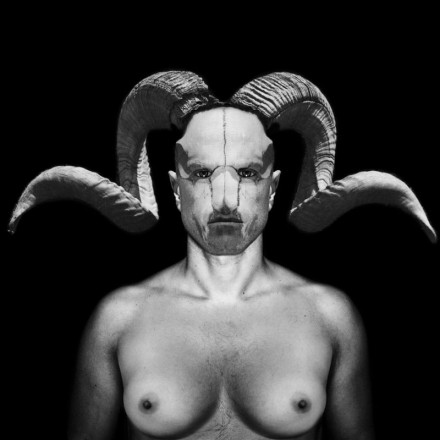
© Gonzalo Bénard
Please visit Oneness, by Gonzalo Bénard for the full size image.
Text and photos by Gonzalo Bénard.
Not even for one moment did I have a conscious break asking, “What am I doing here, naked among the sheep, trying to create a dialogue with these piles of wool when the only thing they know is how to bleat?”
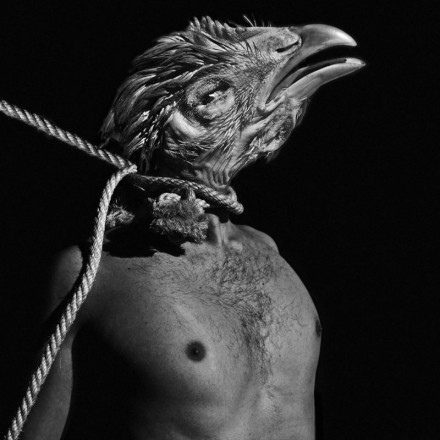
© Gonzalo Bénard
Please visit Oneness, by Gonzalo Bénard for the full size image.
I’m one of those people who have so called ‘difficult mornings’. A period of time between ‘waking up’ and ‘being awakened’. A period of time when the conscious remains inactive, so not filtered. It is in this period of time when we create, when everything flows through our subconscious as if it were free.
A few years ago I woke up from a coma which made my brain run out of oxygen. I was living in Barcelona at the time, right in the centre of the city, in a building much like any other. Surrounded by concrete. Concrete people. And windows looking on to more concrete.
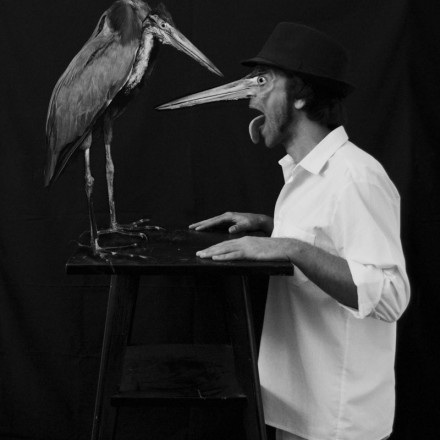
© Gonzalo Bénard
Please visit Oneness, by Gonzalo Bénard for the full size image.
Previously I lived and studied in Yolmo, in the Himalayas, with Tibetan monks in a monastic school of arts, dance and philosophy. This was many years ago. Maybe 15. I lost my chronological memory during my coma, and never worked at recovering it as I never found it necessary to live. Time just doesn’t exist. There is the past supporting the present to help build the future. And all of these, the whole life itself, is a collection of moments. Moments with no time. Making a single major moment called life.
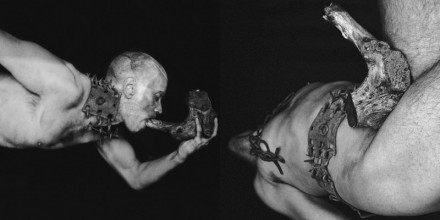
© Gonzalo Bénard
Please visit Oneness, by Gonzalo Bénard for the full size image.
In the same area where I spent summer holidays when I was a kid, and teenager, there was an immense field where I used to run free. Most times naked. Sometimes painting my body and playing Indians with my brother’s presence, after he died. It was the way I had to make him feel closer. We used to collect pieces of wood and sculpt them creating rituals of life, and rites of death. We used to perform ceremonials in nature, to nature. Acting like wolves. Birds. Trees. Wind. Feeling the elements. Earth. Fire. Water. Air. The air we could feel on our naked bodies. The cold waters of the river near by. The heat of the sun. On earth. Sometimes we used to steal a horse to ride free. As if the owner wouldn’t know that.
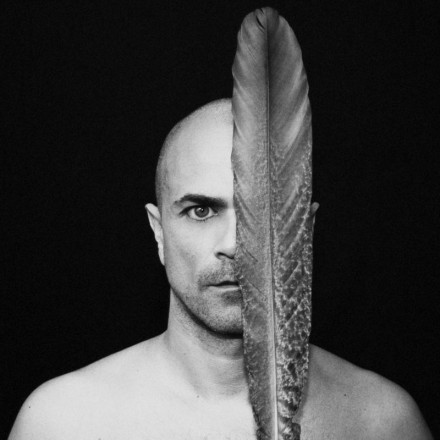
© Gonzalo Bénard
Please visit Oneness, by Gonzalo Bénard for the full size image.
Since a kid I had this connection with the elements, and with death. It has always been part of me, growing up with this. Talking with dead people who come asking for help, when they left unfinished issues in their life here. I’m used to listening to the elements. To creating dialogues.
After some years living in Barcelona I started feeling a need again for this. For nature. For the basic elements as I couldn’t find them in the concrete. I then had a motorbike accident on the highway going to a place where I used to find it. I needed more than a moment. I needed that time to connect life. With life.
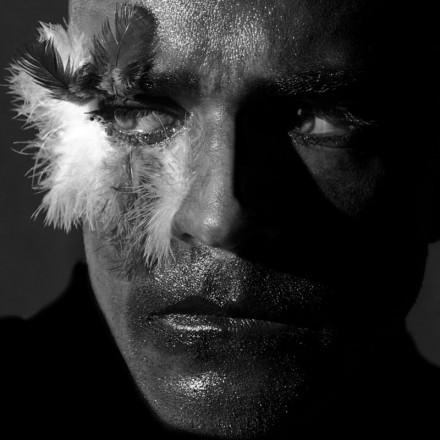
© Gonzalo Bénard
Please visit Oneness, by Gonzalo Bénard for the full size image.
When I woke from the coma I took finally the decision to find a wooden house in the middle of a forest near the sea, far from everything so I could find myself again. Fix lost puzzle pieces. Find memories lost. Knowing that I could only be successful if I were being me in nature. After this first re-encounter with me and nature, sometimes dancing nude under the moonlight being touched by moon beams filtered by the trees of the forest, I moved to the country house for a sabbatical year, far away, closer to myself.
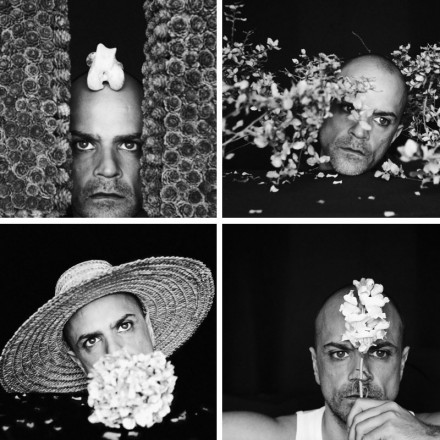
© Gonzalo Bénard
Please visit Oneness, by Gonzalo Bénard for the full size image.
There I found my brother again. In nature. Where I left him the last time, waiting for me to play again.
If before the coma I had had an intense and immense fight between the subconscious and conscious worlds, the whole sabbatical year in the country side was a battle to fix the whole me.
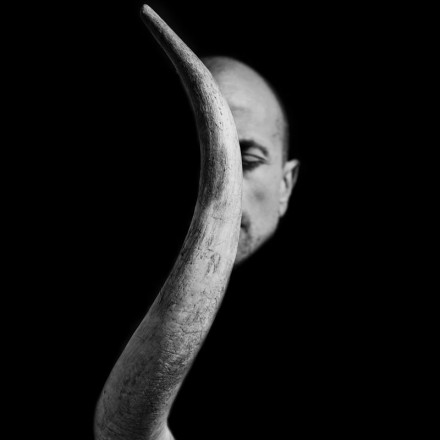
© Gonzalo Bénard
Please visit Oneness, by Gonzalo Bénard for the full size image.
I decided to stop.
To listen.
To feel.
To live.
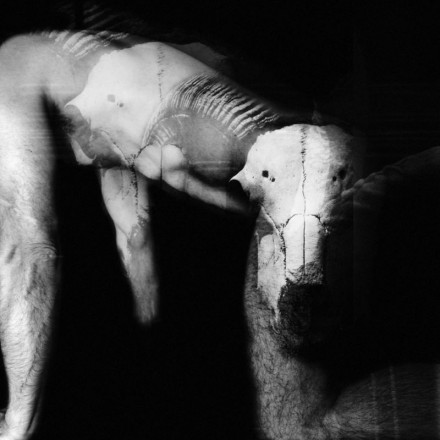
© Gonzalo Bénard
Please visit Oneness, by Gonzalo Bénard for the full size image.
To create new boundaries so I could feel and understand them—so I could break them.
To feel nature and be a part of it; as a giant cactus can co-exist with a fragile flower.
To observe and learn how an eagle was building its nest in that tree, and how the kids were born there, and how they had the first lessons in flying free. And not falling down. Feeling the wind and going with it or through it.
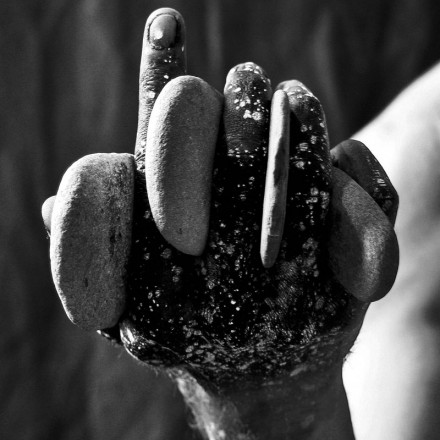
© Gonzalo Bénard
Please visit Oneness, by Gonzalo Bénard for the full size image.
To create dialogues. Within and without the fences.
And no, I didn’t give up for a single moment when I decided that I would have a deep dialogue with the sheep walking around there. I listened to them bleating as if they were teaching me how to do the same. And I answered till I achieved dialogue. Naked with them on my four legs. I was happy. I was feeling part of nature again. I felt one of them. I broke boundaries to be in oneness again.
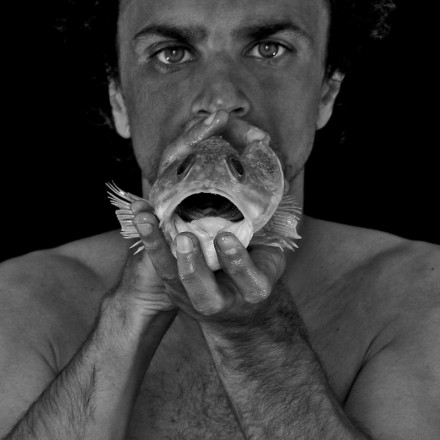
© Gonzalo Bénard
Please visit Oneness, by Gonzalo Bénard for the full size image.
Then something happened as a welcome from nature; one of them gave birth next to me. So I helped the baby one to come out. I was giving life to life. Participating in Life. Living Life. Again.
I took the horses then, and ran wild and free. Feeling the winds and breezes, its breaths and heart beats. As oneness, or in oneness with the horse as if it were the horse taming me. The horse felt that I trusted her. And when you trust you receive the same back. When it’s honest and deep trust without questioning. Just being. I let the horse tame the man to become one with her. So she become one with me.
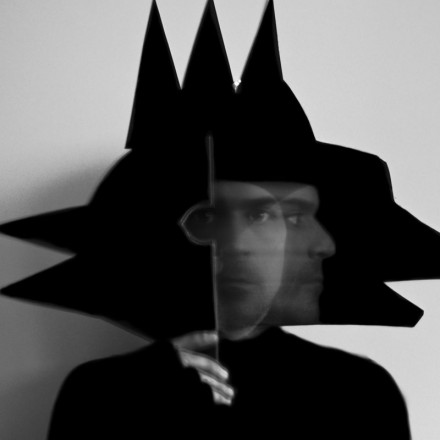
© Gonzalo Bénard
Please visit Oneness, by Gonzalo Bénard for the full size image.
And the wood. The trees, the mud. The plants growing. The smell and all the senses renewed day after day. I started dancing again, dancing rituals of life. Dancing rites of death. Dancing stars and infinite skies. Feeling the mud underneath my bare foot. The air feeding the fire feeding the earth feeding the water feeding me. Dancing as air as water as earth as fire. Feeling the eagle’s wings, the wool’s warmth, the wolf’s heart, the horse’s power as a steady rock. Feeling myself in nature. As a wizard, a shaman, a boromatchi… a wise being feeling nature as it is. Without labels. Without boundaries. A hybrid of many lives.
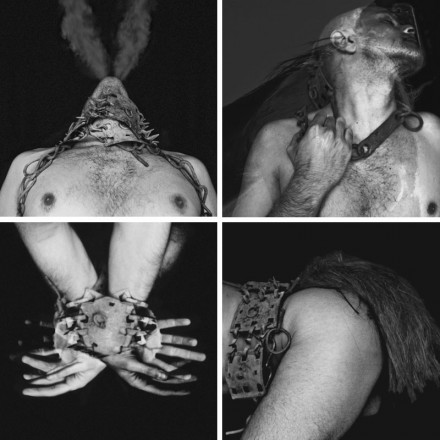
© Gonzalo Bénard
Please visit Oneness, by Gonzalo Bénard for the full size image.
With respect. In Oneness. Being honest. Being death. Being rebirth. Being alive. Being life.
Being love.
And Being One.
For more information and photos, please visit Gonzalo Bénard website or buy Oneness Blurb book.
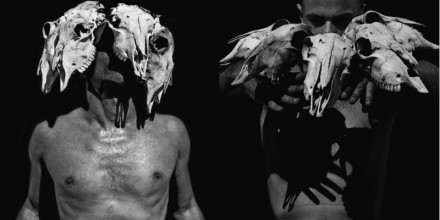
© Gonzalo Bénard
Please visit Oneness, by Gonzalo Bénard for the full size image.
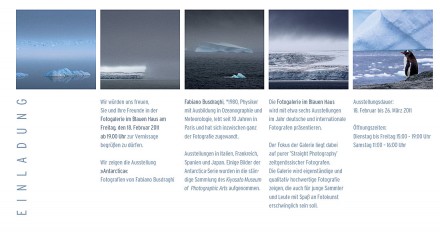
Please visit Antarctica by Fabiano Busdraghi in Fotogalerie im Blauen Haus, Munich for the full size image.
In a couple of weeks I will expose a selection of my photos from Antarctica in Fotogalerie im Blauen Haus, a gallery dedicated to photography that is located in Munich. Germany.
You can visit the exposition from February 18th to March 26th 2011 (Tuesday-Friday: 3pm to 7pm and Saturday 11am to 4pm). If you want to talk a bit about Antarctica heard some of the anecdotes from my trips, or just meet me, I’ll be present for the opening on February 18th 2011 starting from 7pm.
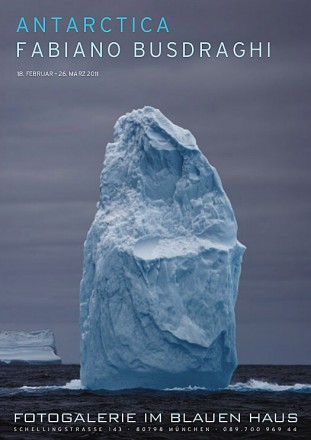
Please visit Antarctica by Fabiano Busdraghi in Fotogalerie im Blauen Haus, Munich for the full size image.
This is the address and contact informations of the gallery:
Fotogalerie im Blauen Haus
Schellingstraße 143
Ecke Schleißheimer Straße
80798 München | Maxvorstadt
Phone: 089 – 700 969 44
[email protected]
www.fotogalerie-im-blauen-haus.de
I’ll expose a total of 26 photographs from my trips to Antarctica, for the biggest part they are among the most abstract and minimalistic pictures I shoot on the white continent. For more informations about my travel to Antarctica and this series of photographs you can have a look to the article I wrote some months ago: Physics, adventure, poetry and photography in Antarctica.
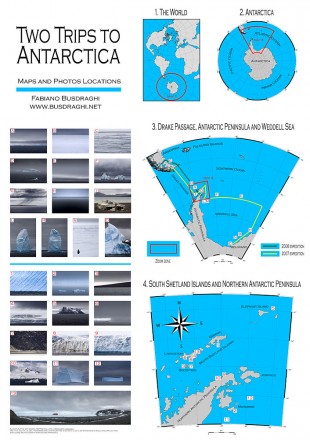
Please visit Antarctica by Fabiano Busdraghi in Fotogalerie im Blauen Haus, Munich for the full size image.
I prepared a poster with several maps of my trips to help visitors locate my pictures. The version displayed on this page is quite small, but if you are interested you can download a bigger file (0.8Mb): Antarctic Map.
Concerning the prints, I’ll expose eleven 30x45cm edition of 15, eleven small 8x12cm edition of 15, two 50x75cm edition of 9 and one panoramic 23x82cm edition of 15. All the photos have 5cm of white paper all around the image, signature and edition number is on the back lower white margin. The photos are museum archival inkjet prints on a really beautiful paper: Photo Rag Baryta by Hahnemühle. It looks like the semi-lucid fiber paper traditional baryte paper used in the darkroom (actually it really contains a layer of baryte).
If you like my work in Antarctica please tell your friends about the exposition. Feel free to reuse all the images on this page. Thank you very much and hope to see you soon in Munich.
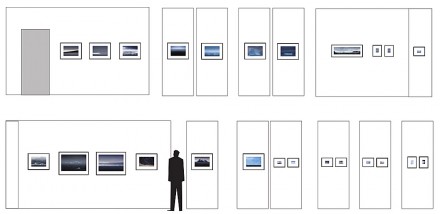
Please visit Antarctica by Fabiano Busdraghi in Fotogalerie im Blauen Haus, Munich for the full size image.
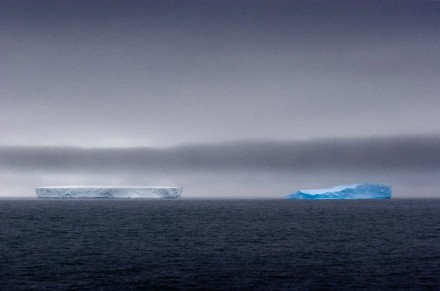
Please visit Physics, adventure, poetry and photography in Antarctica, by Fabiano Busdraghi for the full size image.
Some time ago I was invited by Paul O’Sullivan -the Ed Kashi studio’s Social Media Editor- to join the Impact online exhibit: a virtual exhibition of articles and photographs. Here is my contribution, please find at the end of the article a more in depth description of Impact and the links to navigate through the various Impact articles.
Two trips to Antarctica
During my PhD1 in physical oceanography, I had the opportunity to join two major scientific expeditions in Antarctica. The first one, on board of the German icebreaker Polarstern, was dedicated to the in situ measurement of the Antarctic Circumpolar Current transport in the Drake Passage. The second one, on board of the Argentine army icebreaker Almirante Irizar, was much longer and reached the extreme southern limit of the Weddell Sea. Principal scientific objective: a study of the Weddell Sea thermal structure changes, possibly explaining the massive destruction of the Larsen ice shelf.
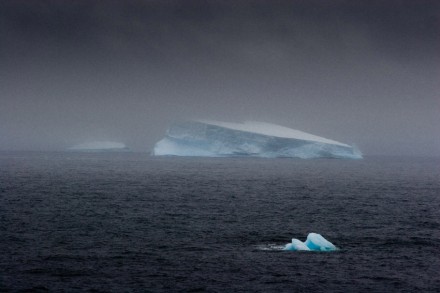
Please visit Physics, adventure, poetry and photography in Antarctica, by Fabiano Busdraghi for the full size image.
On an oceanographic ship, and even more on board of a military icebreaker, the atmosphere is completely different from that of tourist ships traveling to Antarctica. Not to mention that for logistic and security reasons, cruise ships usually are limited to the northern part of the Antarctic Peninsula, while on the Irizar we did go in the southern part of the Weddell Sea. So I was lucky enough to navigate in a virtually inaccessible place and step on the Antarctic continent itself, an experience way more intense than visiting the already beautiful sub-antarctic islands.
I came back with unforgettable memories. A book/diary that is only waiting to find a publisher to be released. Thousands of pictures, many of which are probably among the best photos I’ve ever shot. Lots of anecdotes and stories, emotions and thoughts that have changed my life forever.
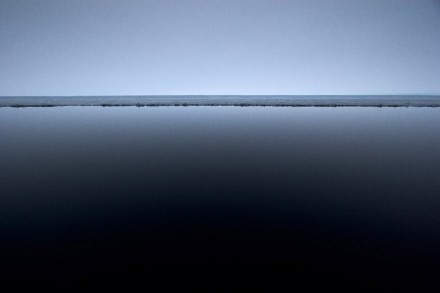
Please visit Physics, adventure, poetry and photography in Antarctica, by Fabiano Busdraghi for the full size image.
Weddell Sea, February 2, 2007
It’s midnight. The Sun dwells upon the horizon. It paints the clouds with the vivid colors of a twilight, but the sunset will not come. The white ice gently turns into pink and orange. The view is simply gorgeous.
Peaceful. That’s the way I feel. And while I admire this light show, while I am in front of the white dunes grazed by the warm glare of dusk, facing the silence of this glorious landscape, everything seems clear, almost obvious. It is this harmony, simply designed by nature and by its interactions, that makes me understand. It is thanks to the natural flow of everything that I re-discover my role. I re-discover my place out in the world and inside of myself.
I do believe this is the most precious gift of Antarctica. To forget the joys and the fears, the needs, the problems we have to face and the roles we have to play everyday of our lives. To escape the prejudices of our cultural background, the pointless structures accumulating for centuries and influencing our social manners and our thinking. To get rid of the schemes that tell us what is beautiful and what is not, what is important and what is meaningless. And finally to free ourselves from our aspirations, our hopes, our desires.
Antarctica brings you back to the primordial dimension of existence. It’s the only place where you feel completely clean, blank, new. That’s why, here, you can appreciate the most elementary sensations Nothing matters anymore but the present, the exact moment you are experiencing. And this is why I do think real life is here, in this endless ice-covered world.
Because here there is nothing except the perfect interaction between the outside world and the one inside yourself. And because I think that humans beings are made exactly for this kind of interaction. And everything else is meaningless.
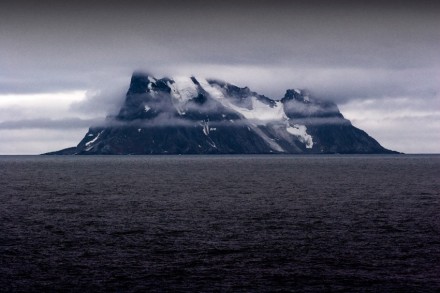
Please visit Physics, adventure, poetry and photography in Antarctica, by Fabiano Busdraghi for the full size image.
Do not get me wrong. These lines are not an invitation to become an hermit, but an attempt to describe the “Antarctica experience”, to analyze it. The emptiness of the great outdoors spaces brings back life to its primal and pure form. A quasi-animal existence, which there appears more authentic and Dionysiac than the everyday one.
Physical Oceanography
The sea around Antarctica is called Southern Ocean. One of the reasons why it has a prominent place in modern oceanographic research is that it is the only ocean in the world that connects the Atlantic, the Pacific and Indian Oceans. Furthermore, the Southern Ocean has a fundamental impact on the global climate, understand how it behave is therefore a key element in climate change research.
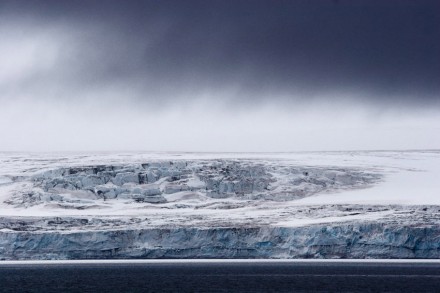
Please visit Physics, adventure, poetry and photography in Antarctica, by Fabiano Busdraghi for the full size image.
My master degrees in applied physics at the University of Pisa has been devoted to the study of low frequency and large-scale variability of mixed layer depth in the Southern Ocean… wait, wait! What on earth physics got to do with photography? And what the hell is the mixed layer? Here’s a short introduction, interested readers may consult my thesis (pdf, 5Mb), while those allergic to mathematics may go straight to the next chapter.
The ocean can be summarized as two superposed layers, with very different water characteristics. The first layer near the surface is called mixed layer, because the interactions with the atmosphere almost continuously produce turbulence which mixes the water. Numerous and complex thermodynamical or mechanical phenomena influence the depth of the mixed layer. Generally all the processes that generate turbulence2 tend to deepen the mixed layer, while the processes that lead to stratification3 of the water column tend to reduce its depth.
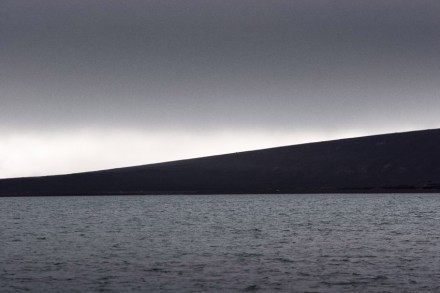
Please visit Physics, adventure, poetry and photography in Antarctica, by Fabiano Busdraghi for the full size image.
The depth of the mixed layer is characterized by a high space and time variability. In the Mediterranean Sea, in summer, the mixed layer measures only one meter or so in depth, but in the Southern Ocean, the winter mixed layer depth may reach a few hundred meters. Seasonal variability of the mixed layer depth is fairly well understood, but little is known of its inter-annual variability, especially in the Southern Ocean, where in-situ measurements are particularly scarce.
Mixed layer depth is extremely important because it determines and influences virtually all ocean-atmosphere interactions. This means that the long-term variability of the mixed layer depth has a fundamental impact on the global climate, both on small and large space scale, and on time scales ranging from few months to even several hundred years.
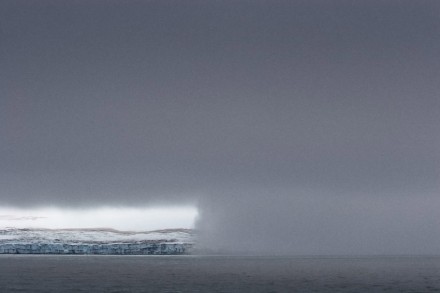
Please visit Physics, adventure, poetry and photography in Antarctica, by Fabiano Busdraghi for the full size image.
The variety of experience
A large fraction of contemporary art photography is purely conceptual and sometimes the artistic statement is even more important than the image itself. Some artists start by thinking about the concept and shoot the images only at a later time. On the other hand, others follow an aspiration, a feeling, sometimes just a vague idea, mixing it with their instinct and intuition. Only later, once the pictures have been taken, they write the statement to give back artistic unity and coherence to a series of images. Certainly I belong to this second category of photographers.
The photographs I took during two trips to Antarctica represents a photo-diary. They are a pure hymn to the beauty of nature, a nature in which the photographer is simply a spectator. They witness the astonishing and unforgettable beauty in front of which one can only remain silent and amazed. But at the same time these photos can be read on several different and complementary levels. All these different interpretations were more or less implicitly present at the time of shooting and are still there in the finished prints.
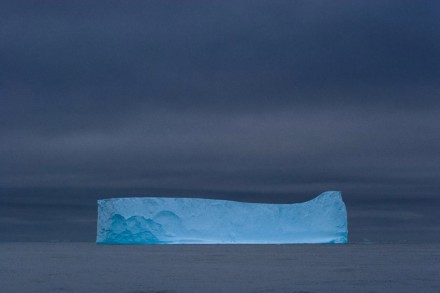
Please visit Physics, adventure, poetry and photography in Antarctica, by Fabiano Busdraghi for the full size image.
On one hand these photos are the document of a fragile system in danger. The views of almost completely melted icebergs -icebergs that only a few years ago were Larsen, one of the largest glaciers on earth- are a clear evidence of what man is doing to the Earth. These pictures represents a proof of the too often overlooked fragility of the climatic system. They are a warning for the people that stares at them: They can have a direct look at the beauty of the world we live in and realize that it can rapidly change in a drastic way. This can ultimately help to bring a greater respect for nature. It can persuade people to have a more environmentally responsible behavior. And if not, at least these photos are a document to show how was the polar climate at a certain time, tell the children of our children what it was before it eventually disappeared.
On the other hand these photographs are the visual culmination of several years of study and research in physics and oceanography. Photography is often very distant from scientific research, and the scientific world usually looks at the arts (and vice versa) with suspicion and sometimes even contempt. Nevertheless I do think it would be better to try to follow something similar to the Da Vinci’s model: I think it is important to cross the boundaries between various disciplines, to be able to be at the same time an engineer and a painter or an anatomist and an inventor. Without necessarily trying to have an encyclopedic knowledge about everything, I believe we should be more open to build connections and to have contaminations between different fields of human knowledge.
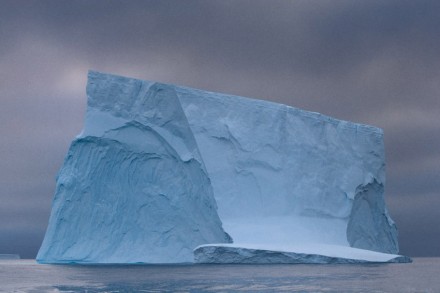
Please visit Physics, adventure, poetry and photography in Antarctica, by Fabiano Busdraghi for the full size image.
Finally my pictures of Antarctica are also a direct reflection of my feelings. The same feeling of emptiness and primordial purity which permeates all the pages of my diary. It is curious, because at that time I had not yet read Zhuangzi and did not know much about Taoist philosophy. I only had some seasoned notions of mysticism, stuff comparable to what you can read in some alternative esoteric textbooks, things in retrospective I totally despise. The conceptions that were in my head back then, were the opposite of what I now consider to be the true meaning of Chinese Taoist philosophy. Yet in the pages I wrote in Antarctica -and reflected in the pictures I took- I can clearly find the presence of Taoist philosophy. This reminds me of a sentence, I can not remember if it is from Jean François Billeter, Jean Levi or Romain Graziani, but it goes more or less like this:
You understand what Zhaungzi means only if you have understood it already by yourself before reading it.
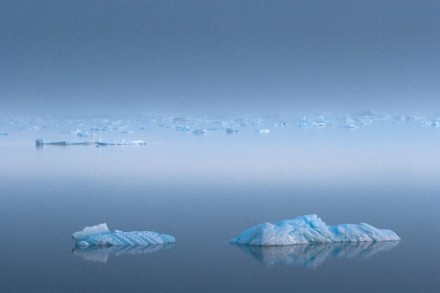
Please visit Physics, adventure, poetry and photography in Antarctica, by Fabiano Busdraghi for the full size image.
A few years after my trips to Antarctica, reading with great pleasure this wonderful book, I thought, a little presumptuously, that I’ve figured out the sense of many pages of Zhuangzi before reading them. And this was only thank to the ice of the white desert, to its purity and beauty. Thank to Antarctica.
So, who am I? Who is Fabiano Busdraghi? A physicist who studies the impact of mixing layer depth on climate change? A poet, dazzled by the glare of the ice? An adventurer on an Argentinian naval vessel? A sinologist who is interested in ancient Chinese philosophical Taoism? A photographer searching for beautiful images? A person unable to choose what to do in his life?
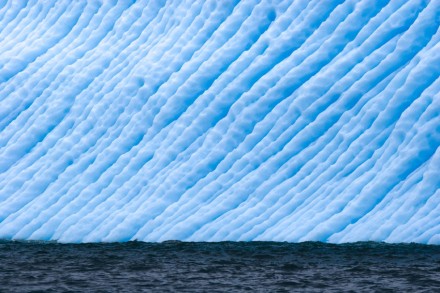
Please visit Physics, adventure, poetry and photography in Antarctica, by Fabiano Busdraghi for the full size image.
I do not like to use the word “art” when I speak about my photographs, because it is a vague and abused term. But when it comes to a pure act of creation, call it art if you want, I think it should be a little bit like life itself. At least concerning my own life. I always want to do everything, I want to try the countless experiences that life can offer. Just one life is not enough, I always find myself chasing all possible existences out there. So to be sincere and consistent in the end concerning what I create -and in particular concerning my photographs- they must contain a little bit of all of this: physics, emotion, adventure, poetry, philosophy, travel, encounters, thermodynamics, relations…
I do not know if at the end it is more or less evident, but in any case my photographs in Antarctica are the product of all this.
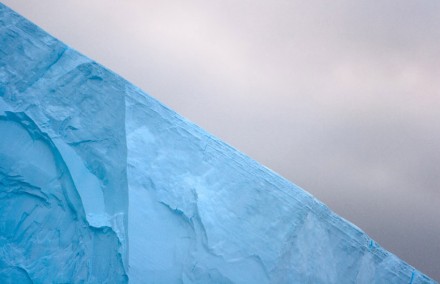
Please visit Physics, adventure, poetry and photography in Antarctica, by Fabiano Busdraghi for the full size image.
More picture from Antarctica are available on my antarctic portfolio page.
Thank you very much to Matteo Cantiello for his useful suggestions and kind help provided during this article revision and translation.
Impact online exhibition
Welcome to the new Impact online exhibition, a project exploring the internet as a venue for insightful photographic work. In an effort to remind viewers of the important role photographers play around the world, we invited an array of imagemakers to share galleries on their blogs (like this one) that comprise 12 images representing an experience when they had an impact on or were impacted. By clicking on the links below the Impact logo, you can move through the exhibition, viewing other galleries by different photographers. You can also click the Impact logo to be taken to a post on the liveBooks Resolve Blog where you can see an index of all participating photographers. We hope that by linking different photographic visions of our first topic, “Outside Looking In,” we can provide a multifaceted view of the topic as well as the Impact individuals can have on the world around us.
- At Locean (University Paris 6 and SZN (University Federico II of Naples).
- Such as wind friction, waves breaking, surface cooling, eddies, ice formation salt rejection, Langmuir cells, currents shear…
- Like surface heating, horizontal, intrusions, Ekman pumping…




